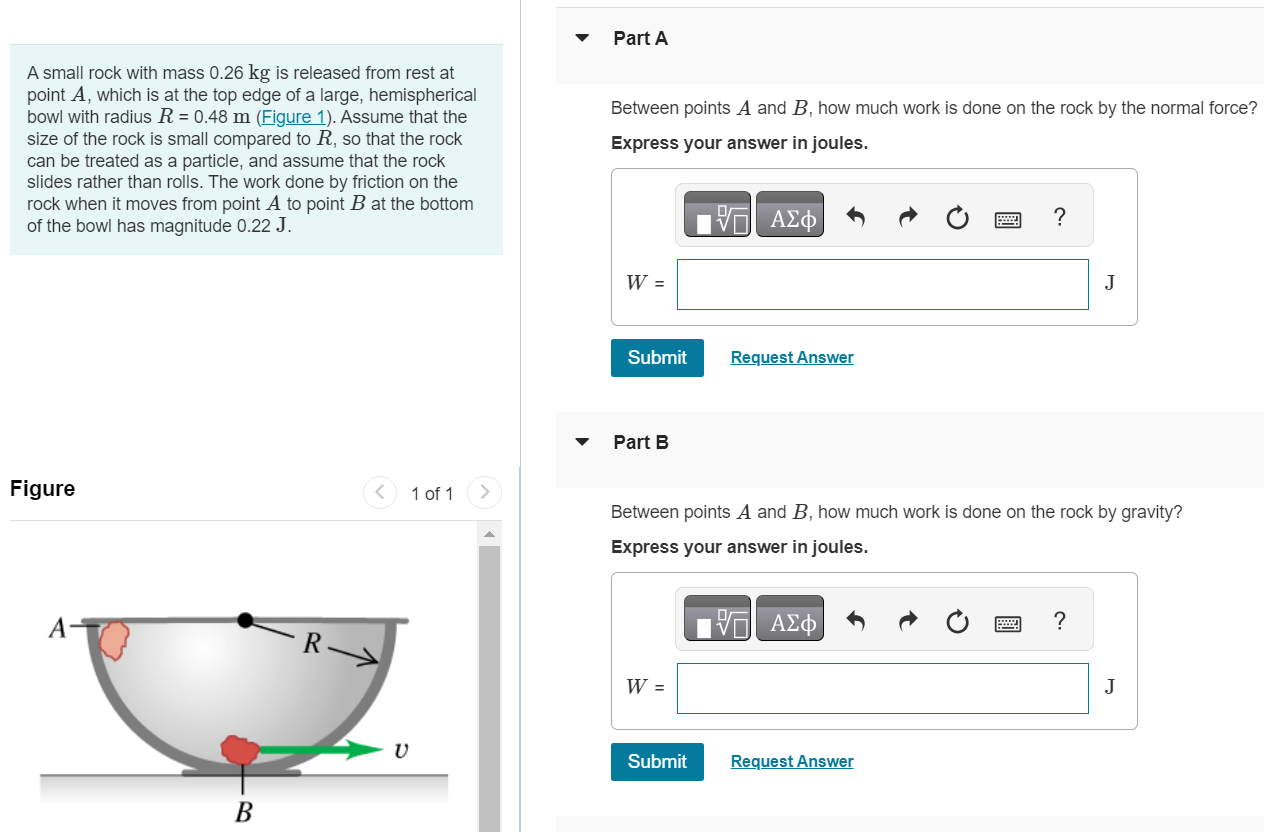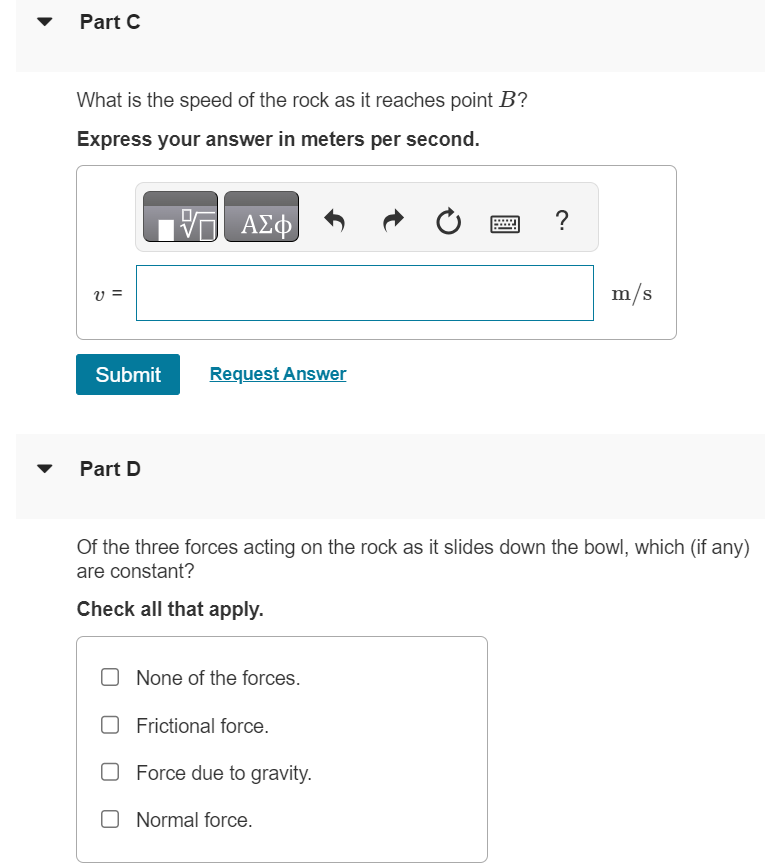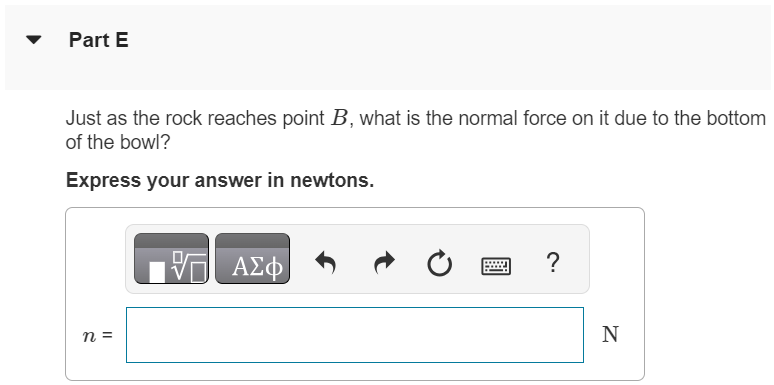A small rock with mass 0.26 kg is released from rest at point A, which is at the top edge of a large, hemispherical bowl with radius R = 0.48 m (Figure 1). Assume that the size of the rock is small compared to R, so that the rock can be treated as a particle, and assume that the rock slides rather than rolls. The work done by friction on the rock when it moves from point A to point B at the bottom of the bowl has magnitude 0.22 J. Figure 1 of 1 Part A Between points A and B, how much work is done on the rock by the normal force? Express your answer in joules. Submit Request Answer Part B Between points A and B, how much work is done on the rock by gravity? Express your answer in joules. Submit Request Answer Part C What is the speed of the rock as it reaches point B ? Express your answer in meters per second. Submit Request Answer Part D Of the three forces acting on the rock as it slides down the bowl, which (if any) are constant? Check all that apply. None of the forces. Frictional force. Force due to gravity. Normal force. Part E Just as the rock reaches point B, what is the normal force on it due to the bottom of the bowl? Express your answer in newtons.


